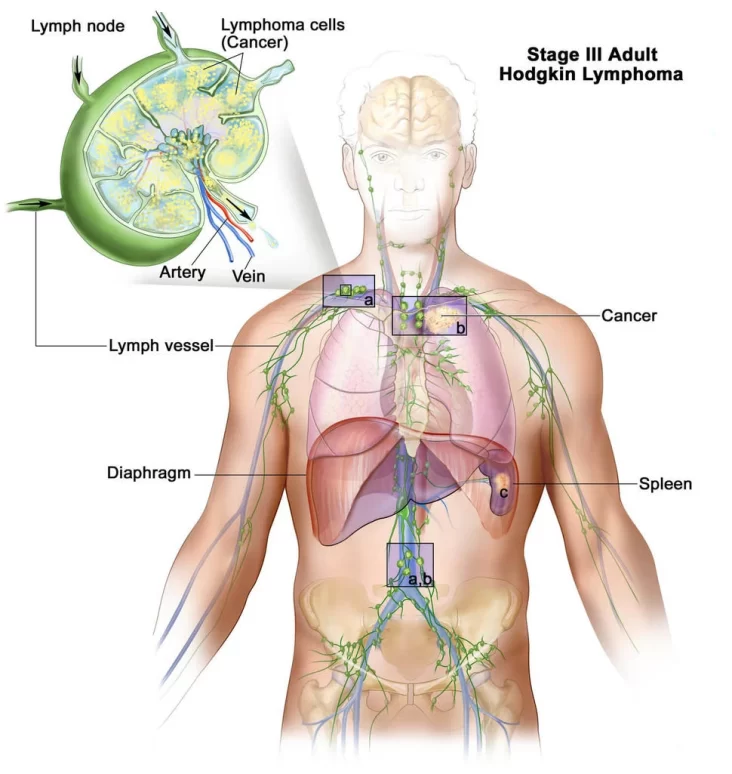Make an Appointment
Hodgkin lymphoma, often known as
Hodgkin’s disease
, is a type of cancer that affects the lymphatic system. The lymphatic system is a collection of nodes (tissue knots) linked by veins that drain fluid and waste from the body. Foreign organisms and cells are filtered out by the lymph nodes, which act as small filters.
The lymphatic system is also involved in the production of white blood cells called lymphocytes, which help protect you against illnesses caused by bacteria, viruses, and fungi. You may notice that some of your lymph nodes and tissue in the infection area become swollen and sensitive while your lymphatic system is combating an active infection. This is the body’s natural defence against illness. Lymphoma develops when lymph node cells or lymphocytes multiply uncontrollably, resulting in malignant cells with the ability to infect various tissues throughout the body.
Hodgkin lymphoma and non-Hodgkin lymphoma are the two types of lymphoma, classified by particular cancer cell features.
There are four different sub-types of this disease:
Nodular sclerosis: The most prevalent subtype of classical Hodgkin lymphoma is nodular sclerosis. It is most commonly detected in the chest and/or neck in children and young adults, especially young women. Fibrous scarring in the lymph nodes may be caused by this subtype.
Mixed cellularity: This sub-type accounts for roughly 25% of all the Hodgkin lymphoma cases and is more common in older people. The abdomen is a common location for this sub-type.
Lymphocyte-rich: This type of Hodgkin lymphoma accounts for 5% of all Hodgkin lymphoma cases and is commonly diagnosed in men.
Lymphocyte-depleted: This exceedingly rare disease accounts for less than 1% of all Hodgkin lymphomas and is frequently found in elderly people or people living with HIV.
Nodular lymphocyte-predominant Hodgkin lymphoma (NLPHL) is a less common form that affects roughly 5% of Hodgkin lymphoma patients.
Popcorn cells, which are lobular forms of Reed-Sternberg cells that look like popcorn, are seen in NLPHL. The most common age group for NLPHL is middle-aged individuals.
Although the specific causation of Hodgkin lymphoma is unknown, the following factors have been suggested:
Viruses: Hodgkin lymphoma has been linked to the Epstein-Barr virus, the same virus that causes infectious mononucleosis (mono). The genome of this virus can be found in 20 per cent to 80 per cent of Hodgkin lymphoma tumours.
Familial: Same-sex siblings and identical twins of someone with Hodgkin lymphoma are at an increased risk of developing the disease. Children who have a parent with Hodgkin’s disease are likewise at a higher risk.
Environment: Fewer siblings, an earlier birth order, single-family households, and fewer playmates are linked to an increased risk of Hodgkin lymphoma, presumably due to a lack of early exposure to bacterial and viral infections.


One Comment
Pingback: Hodgkin Lymphoma – Sujata Birla Hospital